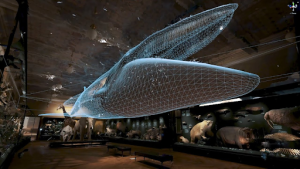The concept of Narrative Inquiry really stood out to me in this module as a way to engage with the community, or even our colleagues, and make them feel heard and understood. Asking someone “When was the last time you felt really happy?” can tell you so much more about a person and what their wants and needs are, than asking simply “What do you like about the library?” The latter is almost a dead-end type of question that people either aren’t interested in enough to take the time to answer, or they might answer generically with what they think the questioner would want to hear so the exchange might come to a close (Stephens, 2020, 2025.
When we ask people about themselves, rather than their relationship to the library or its services, we show that we care about them and their experiences as individuals and as part of the greater community. As someone interested in archival work, I feel like this is such an important lesson to remember, because a major part of archives today involves restoring silenced voices to historical and current narratives. When we ask people to share their own stories and experiences, we might be better equipped to more deeply understand the world around us, and the past events that led us to this moment in time. This is especially important where recorded history has been primarily curated by and for men of European descent. If we create community archives where all folks can share their stories and the stories of their families, the community history becomes richer and reflects the lived reality of its inhabitants.
In this sense, I really liked the idea of the Human Library, where readers “check out” a “human book” to hear the person’s unique experiences in life, ask advice, or just get to know a new person through an organic conversation in a safe environment (Wentz, 2013). I could see this working well in a community-centered archival space as well, and it might even draw people into that space who might not have felt comfortable there under other circumstances. Arne-Skidmore (2021) reported that after attending a Human Library experience, participants later noted that the event “inspired them to reflect on their own biases and resulted in an increased sensitivity towards the diversity that exists beyond physical appearance.” This is the power of libraries, to help people grow and learn from the perspectives of others, while also forging connections between community members who may not have met otherwise.
As an aside, the Human Library reminded me of a video (see below) where a man traveling in Japan rented an Ossan (Old Man) for a day, and the man took him around to some local places and gave him advice on how to meet new people. I’ve heard of other similar services in Japan where you can rent a Grandma to help you around the house, give you life advice, or just be there for you during an emotionally trying time. Even though it might seem a little strange at first, I think this would be a wonderful way for older individuals to stay social and involved in the community, while also having a positive impact on others who might need assistance, advice, or maybe they’ve just moved somewhere new and are looking for recommendations for local food or recreation spots. I will admit that I don’t know if this would work out so well in America given the difference in cultural values, but it’s certainly something to think about, and I believe the Human Library is a related program that has similar benefits for all involved.
References
Arne-Skidmore, E. (2021, August 4). New study on the impact of the human library. Human Library. https://humanlibrary.org/new-study-on-the-impact-of-the-human-library/
Nick.Discovers. (2024, August 28). I rented an old man [Video]. YouTube. https://www.youtube.com/shorts/LjIbvGEyQ0o
Stephens, M. (2020, April 9). Office hours: Narrative inquiry. Tame the Web. https://tametheweb.com/2020/04/09/office-hours-narrative-inquiry/
Stephens, M. (2025). Hyperlinked library power of stories [Video]. Panopto. https://sjsu-ischool.hosted.panopto.com/Panopto/Pages/Viewer.aspx?id=25a905bc-6739-4f68-afea-af10013f32fb
Wentz, E. (2013, April 26). The human library: Sharing the community with itself. Public Libraries Online. https://publiclibrariesonline.org/2013/04/human_librar/




